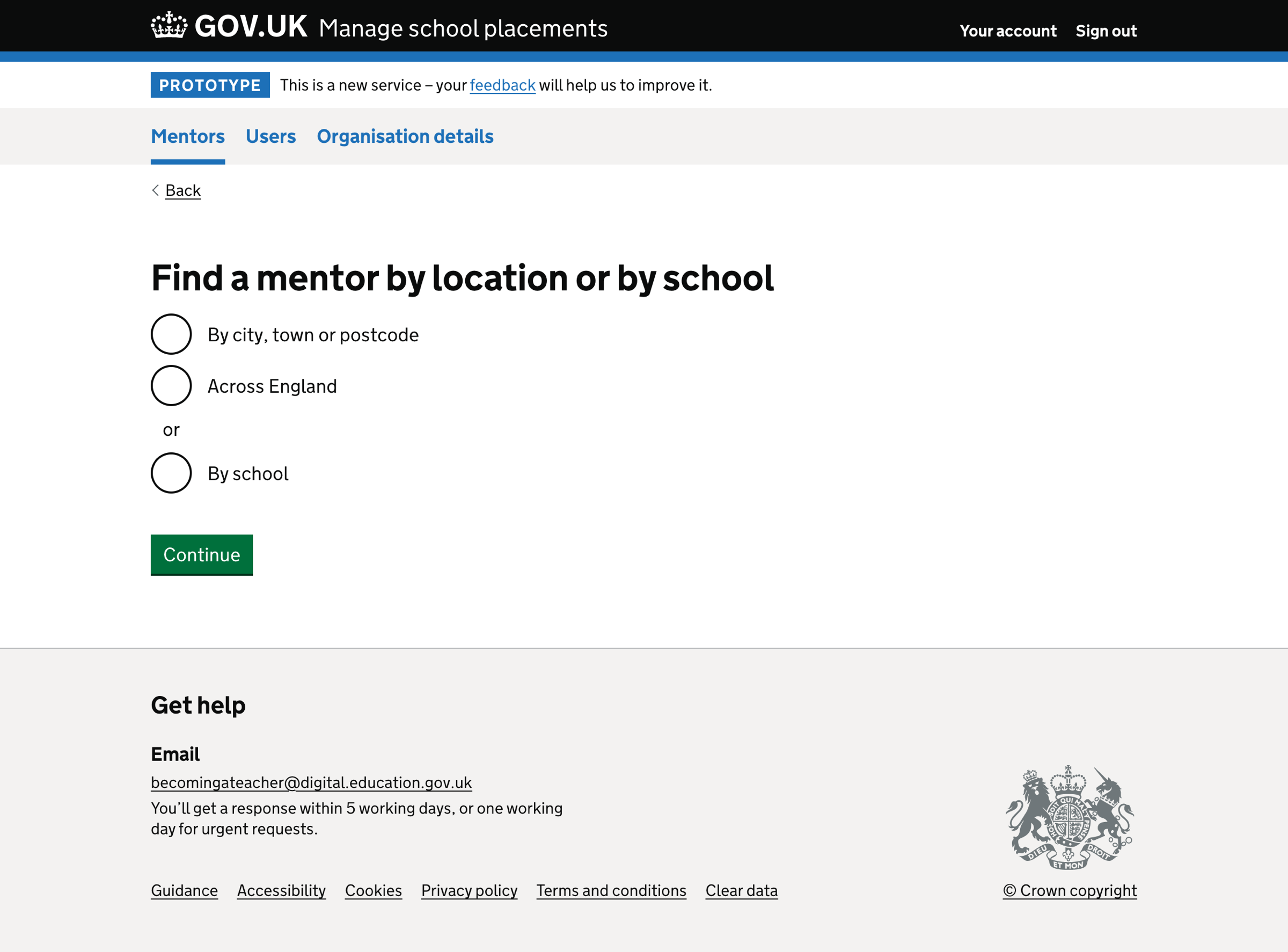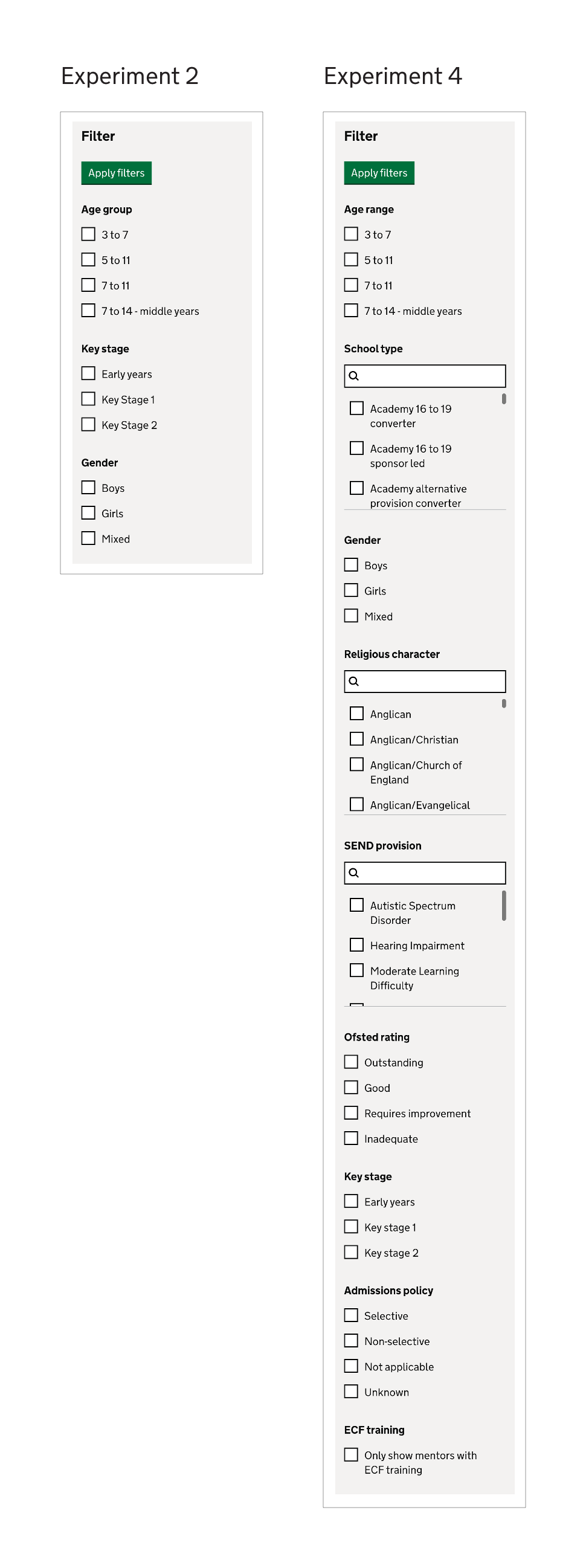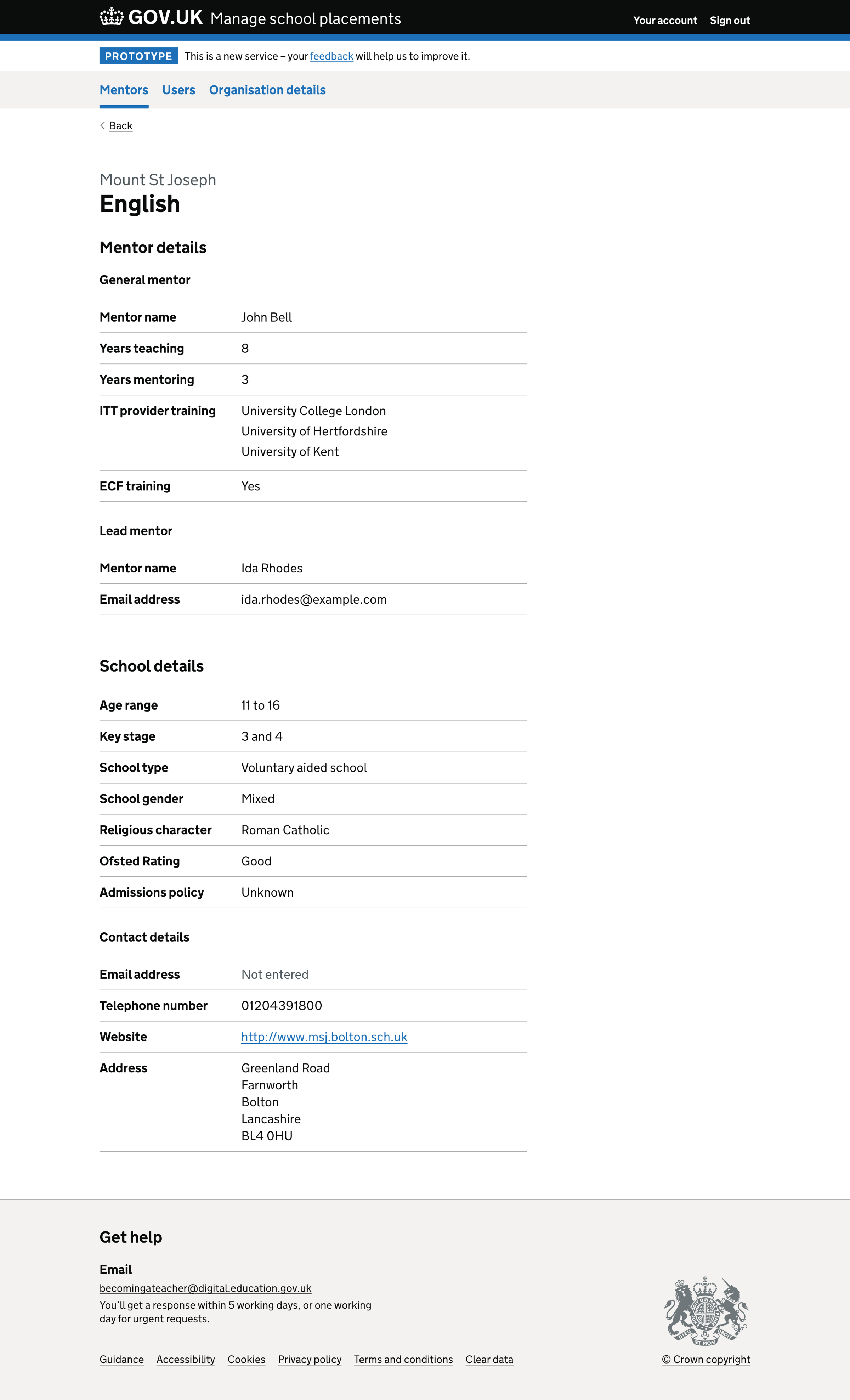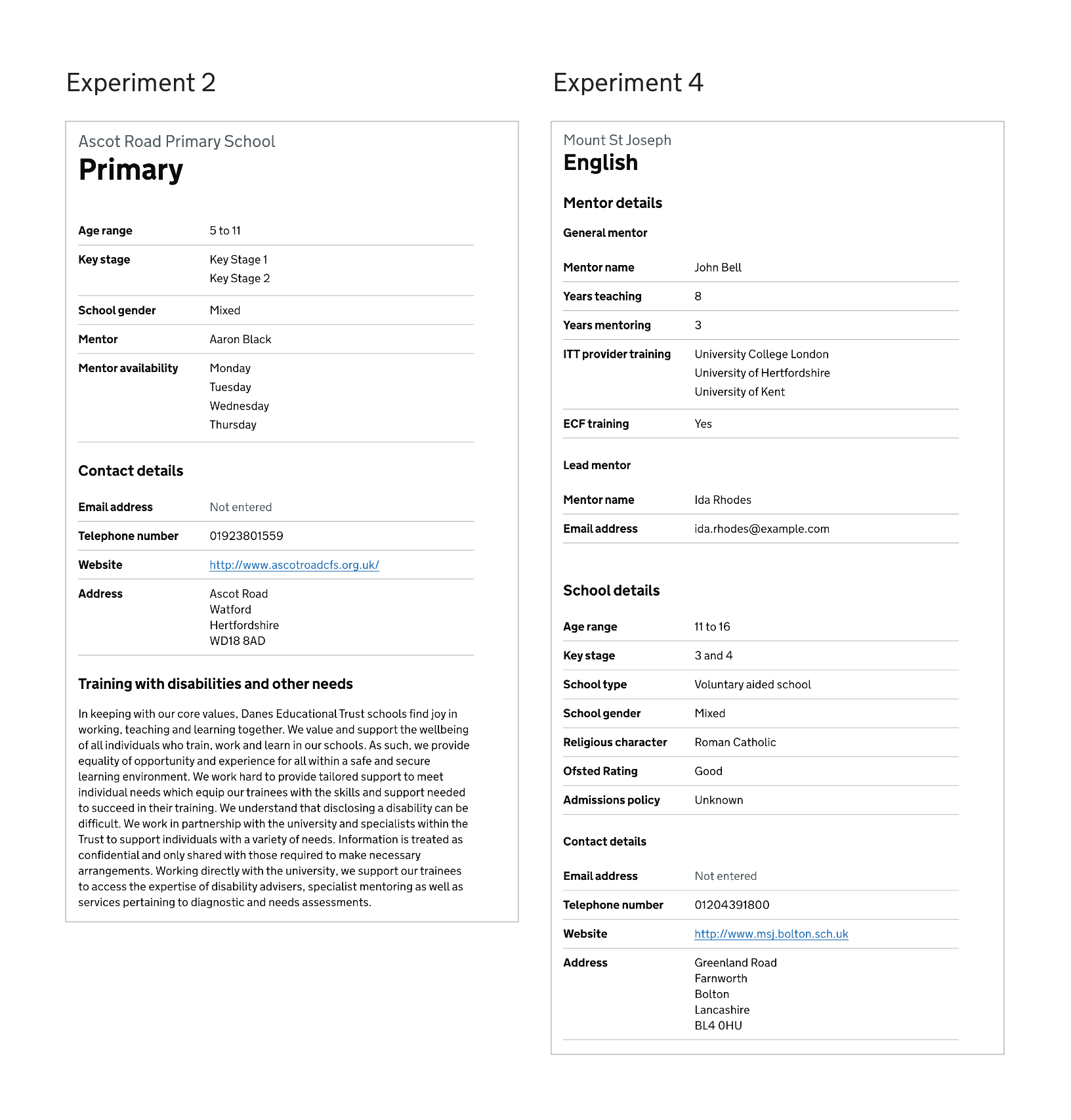In this experiment, we again addressed problem statement 2, problems with mentor availability:
Providers need high-quality mentors for Initial Teacher Training (ITT) trainees.
They need help finding mentors within their networks, limiting how many trainees they can recruit.
How might we support providers to find enough mentors to maximise trainee capacity?
This is the third iteration in our approach to ‘Finding a school placement’.
Experiment goals
The experiment had 2 goals:
- general fact-finding about mentors
- understanding how a provider might find a mentor
General fact-finding about mentors
The fact-finding part of the research included:
- a general discussion about the participant’s role, their organisation and their partner school network
- a run-through of their pain points, core needs and any specific challenges they face with finding mentors
Understanding how a provider might find a mentor
We showed participants a prototype journey of how they could search for a mentor based on chosen criteria.
How the prototype works

Finding a mentor has 5 steps:
- Find a mentor by location or by school
- Select an age group
- Select a subject
- View a list of mentors
- View an individual mentor
Find a mentor by location or by school

We display the list of locations in an autocomplete. We populate the list of places using the Google Places API.

We display the list of schools in an autocomplete. We populate the list of schools from Get information about schools (GIAS) data.

Age group

The question has 3 options:
- primary
- secondary
- further education
If the user has not answered the question, we show an error message:
Select an age group
Subject
We show a list of subjects depending on the age group previously selected.
Primary subject specialism

We show a list of primary subject specialisms if a user selects the ‘primary’ age group. These include:
- Primary
- Primary with English
- Primary with geography and history
- Primary with mathematics
- Primary with modern languages
- Primary with physical education
- Primary with science
Secondary subject

We show a list of secondary subjects if a user selects the ‘secondary’ age group. These include:
- Ancient Greek
- Ancient Hebrew
- Art and design
- Biology
- Business studies
- Chemistry
- Citizenship
- Classics
- Communication and media studies
- Computing
- Dance
- Design and technology
- Drama
- Economics
- English
- English as a second or other language
- French
- Geography
- German
- Health and social care
- History
- Italian
- Japanese
- Latin
- Mandarin
- Mathematics
- Music
- Philosophy
- Physical education
- Physics
- Psychology
- Religious education
- Russian
- Science
- Social sciences
- Spanish
If the user has not answered the question, we show an error message:
Select a subject
List of mentors

Once the user has selected their location, subject level and subject, we show them a list of relevant mentors.
The list page includes:
- filters
- a list of individual mentors
- pagination - if the list contains greater than 20 items
Filters
The filter panel includes example ‘contrast factors’:
- age range
- key stage
- gender
- school type
- religious character
- SEND provision
- Ofsted rating
- admissions policy
- ECF training
We used data from GIAS to populate the school type, religious character, SEND provision and admissions policy filters.
‘Contrast factors’ allow ITT providers to filter the type of mentors and focus the results on what they need.
The filters in the filter panel correspond to the information displayed in the individual mentor list item.
List item
We separated the search results item into two parts:
- school details
- mentor details
We separated the details because ITT providers:
- need to select a placement school based on criteria that create a contrast between two placements - this information is separate from selecting a mentor
- must select a subject-related mentor to support a trainee during a placement
- need specific information regarding the mentors within the school to match them to a trainee
The school details include:
- school name
- subject
- age range
- key stage
- school type
- school gender
- religious character
- Ofsted rating
- admissions policy
The mentor details include:
- mentor name
- years mentoring
- years teaching
- which providers they trained with
- ECF training
Iteration of search results page
The search results list item has changed extensively between experiments 2 and 4.

We also changed the search results filters between experiments 2 and 4 to reflect the changes in the content we show on the search results list items.

Mentor details page

Selecting the school name or subject in the individual school placement list items takes the user to the school placement details page.
The mentor details page is split into two sections:
- mentor details
- school details
Mentor details
The mentor details are split into two further sections:
- general mentor information
- lead mentor information
The general mentor information includes:
- mentor name
- years teaching
- years mentoring
- ITT provider training
- ECF training
The lead mentor information includes:
- mentor name
- email address
Lead mentors are also known as:
- ITT coordinator
- ITT lead
In the future, we must evaluate which term is the most appropriate for all our ITT providers and schools.
School details
The school details are split into two further sections:
- contrast factors
- contact details
The contrast factors include:
- age range
- key stage
- school type
- school gender
- religious character
- Ofsted rating
- admissions policy
The contact details include:
- email address
- telephone number
- website
- address
Iteration of the mentor details page

The mentor details page has changed significantly between experiments 2 and 4. We have:
- split the page between mentor content and school content
- removed the section called ‘training with disabilities and other needs’
- updated the information we display about a school (the ‘contrast factors’) and the mentor.
What we found
When asking schools about their mentors, providers often get a generic list back and don’t know who the mentors are.
When asking schools about their mentors, schools can take a varying amount of time to respond, which affects planning placements.
Participants said our proposed service could reduce administration time and disparate email contact.
A lead mentor explained that our proposed service could help filter out requests on placements their school can’t fulfil – for example, a subject they don’t have a mentor for.